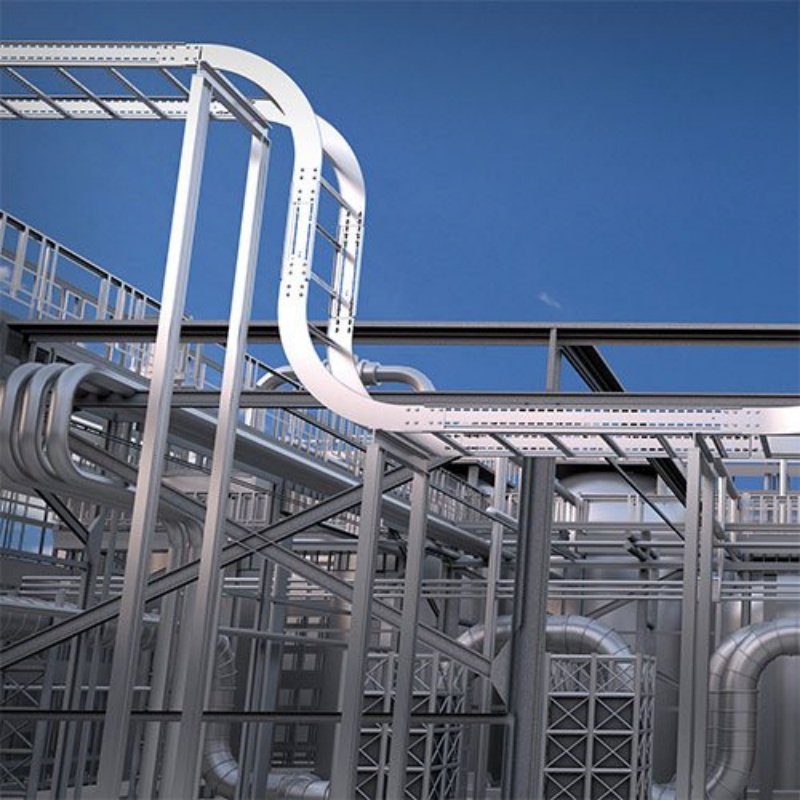For organizing and protecting cabling in IT and telecom infrastructures, wire mesh cable trays offer a versatile and robust solution. Their open-design philosophy balances flexibility with performance, making them a preferred choice for data centers, commercial buildings, and industrial facilities.
Below, we outline the five key advantages of wire mesh trays and then compare them directly to other common cable management systems.
Top 5 Advantages of Wire Mesh Cable Trays
- Superior Ventilation and Heat Dissipation
The open mesh design allows for maximum airflow around cables, significantly reducing the risk of overheating. This is a critical advantage in high-density environments like data centers, where effective thermal management is essential for equipment longevity and performance. - Unmatched Flexibility and Adaptability
Wire mesh trays excel in complex installations. Unlike rigid systems that require meticulous planning, they can be easily adjusted and routed around obstacles. This adaptability simplifies initial installation and makes future modifications or expansions far more straightforward, saving time and labor costs. - Durability and Corrosion Resistance
Constructed from high-strength steel and often finished with a protective coating, these trays are built to last. For instance, black powder-coated cable trays offer excellent resistance to moisture and corrosion, making them suitable for demanding environments and ensuring long-term reliability. - Cost-Effectiveness
Wire mesh trays provide a more economical solution compared to conduit or raceway systems, both in terms of material and installation costs. The lightweight yet strong design requires less material and is quicker to install, reducing overall project expenses. - Ease of Access and Maintenance
The open structure keeps all cables visible and accessible, streamlining routine inspections, troubleshooting, and adding or replacing cables. This is a significant operational advantage over enclosed systems that require disassembly for maintenance.
Comparison with Alternative Cable Management Systems
Here’s how wire mesh trays measure up against other popular options:
- vs. Ladder Cable Trays: Ladder trays are strong and ideal for supporting very heavy cable loads over long spans. However, wire mesh trays offer greater routing flexibility and easier cable access due to their finer, more adaptable grid pattern.
- vs. Solid-Bottom Cable Trays: Solid trays provide superior protection against dust and debris but lack ventilation, which can lead to heat buildup. Wire mesh trays are the better choice where airflow and heat dissipation are priorities.
- vs. Perforated Cable Trays: While perforated trays offer some ventilation, they do not match the unrestricted airflow of a true wire mesh design. The flexibility and often superior coating options of wire mesh trays add to their advantage.
- vs. Conduit Systems: Conduits offer the highest level of physical protection and are mandatory in some harsh or hazardous environments. However, they are inflexible, expensive to install, and difficult to modify. Wire mesh trays are a more adaptable and cost-effective solution for most indoor applications.
- vs. Raceway Systems: Raceways provide a clean, aesthetic appearance for exposed cabling. Their enclosed nature, however, makes installation and maintenance more complex. Wire mesh trays strike an optimal balance between functionality, accessibility, and a modern, industrial aesthetic, especially with powder-coated finishes.
The Ideal Solution for Your Needs
Wire mesh cable trays present a compelling combination of flexibility, durability, ventilation, and value. They are an excellent choice for projects where efficient and reliable cable management is key.
For a high-quality option, consider ShowMeCables’ black powder-coated cable trays. Made from durable carbon steel, they are available in nearly 20 different sizes—from 2″ x 2″ to 24″ x 6″—and come in standard 10-foot lengths that can be easily customized on-site with simple tools.
Post time: Sep-26-2025


